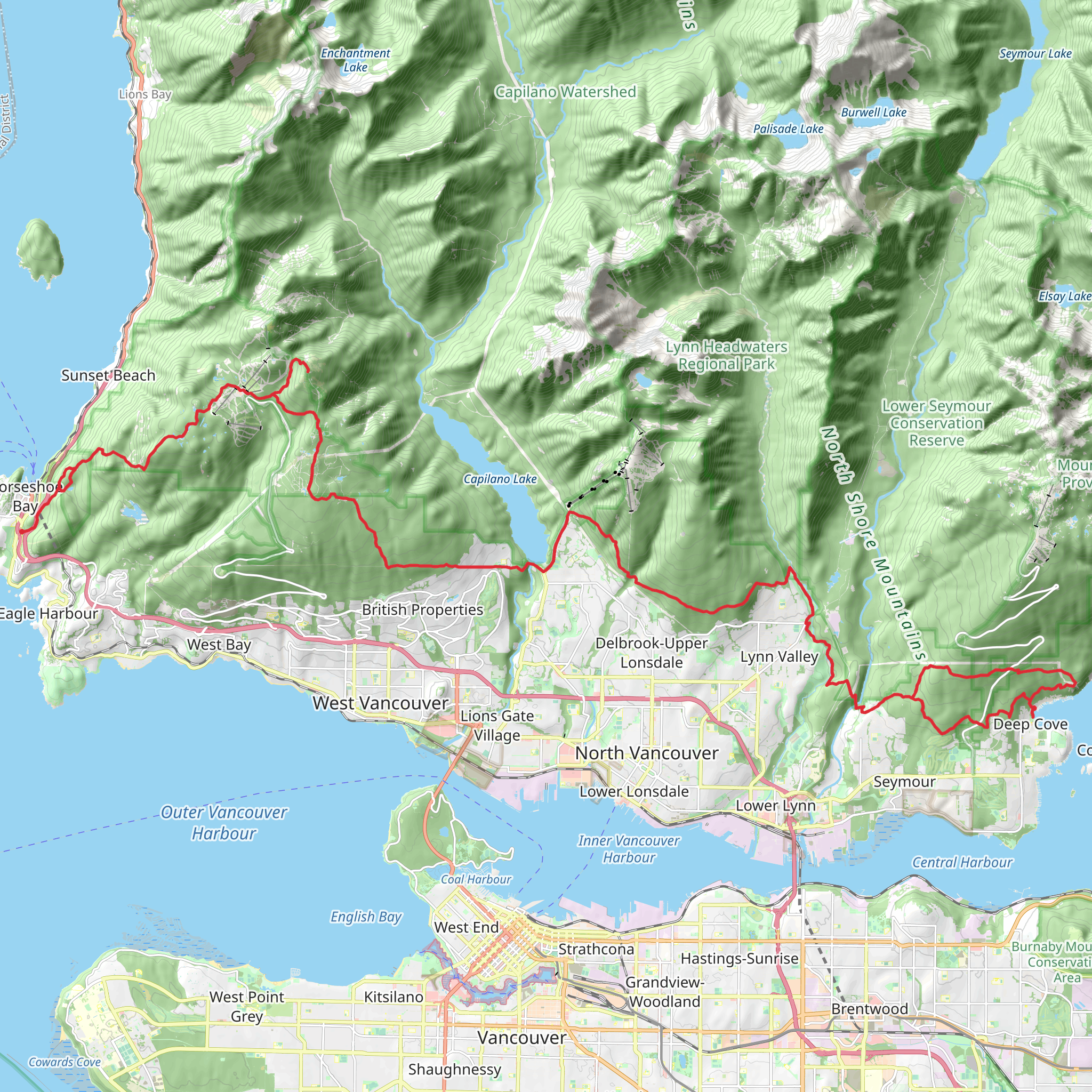Download
Preview
Add to list
More
45.1 km
~3 days
2277 m
Multi-Day
“Experience the Baden Powell Trail's diverse landscapes and rich history on a scenic 45-kilometer trek near Vancouver.”
Spanning approximately 45 kilometers (about 28 miles) with an elevation gain of around 2200 meters (approximately 7220 feet), the Baden Powell Trail offers a challenging yet rewarding experience for avid hikers. This point-to-point trail is nestled near Greater Vancouver, British Columbia, and traverses a diverse landscape that showcases the natural beauty of the region.
Getting to the Trailhead
The western terminus of the Baden Powell Trail is located in Horseshoe Bay, which is accessible by car or public transportation. If driving, you can park at the Horseshoe Bay Park near the BC Ferries terminal. For those opting for public transport, buses regularly service the Horseshoe Bay area from downtown Vancouver.
Trail Overview
As you embark on the Baden Powell Trail, you'll be greeted by the lush temperate rainforests of the Pacific Northwest. The trail meanders through dense canopies of Douglas fir and western red cedar, with the undergrowth teeming with ferns and mosses. The first section of the trail includes a series of switchbacks that will test your endurance as you ascend towards the first notable landmark, Eagle Bluffs. This vantage point, approximately 8 kilometers (5 miles) from the start, offers panoramic views of Howe Sound and the surrounding mountains.
Continuing eastward, the trail descends into the Cypress Provincial Park, where you'll encounter the first significant elevation gain. The path here is well-maintained, but the terrain can be rugged, with roots and rocks requiring careful navigation. HiiKER can be an invaluable tool for staying on track and monitoring your progress through this section.
Historical Significance and Landmarks
The Baden Powell Trail is named after Lord Baden-Powell, the founder of the Boy Scouts, and its creation was a centennial project in 1971 to celebrate British Columbia's 100th anniversary. As you hike, you'll pass by several historical landmarks, including remnants of old cabins and the historic Cleveland Dam, which is roughly at the halfway point of the trail. The dam, built in the 1950s, is a significant structure that provides much of Vancouver's drinking water and is a testament to the region's engineering feats.
Wildlife and Nature
Wildlife is abundant along the Baden Powell Trail. It's not uncommon to spot black bears, so it's essential to be bear aware and know how to safely store food and dispose of waste. Birdwatchers will delight in the variety of species, from the Steller's jay to the barred owl. As you approach the eastern sections of the trail, the environment shifts to include more open areas and second-growth forests, where the sounds of nature are your constant companion.
Final Sections and Completion
The trail's eastern end is at Deep Cove, a picturesque community where you can relax and enjoy the local amenities after your hike. The descent into Deep Cove features a series of steep sections and stairs, which can be taxing on the knees, so trekking poles are recommended. Upon reaching Deep Cove, you'll have completed one of the most iconic trails in the Vancouver area, having traversed a variety of terrains and experienced the rich biodiversity of the region.
Whether you're a local or a visitor, the Baden Powell Trail is a must-do for those seeking a challenging and immersive hiking experience in British Columbia.
What to expect?
Activity types
Comments and Reviews
User comments, reviews and discussions about the Baden Powell Trail, British Columbia.
4.63
average rating out of 5
8 rating(s)

